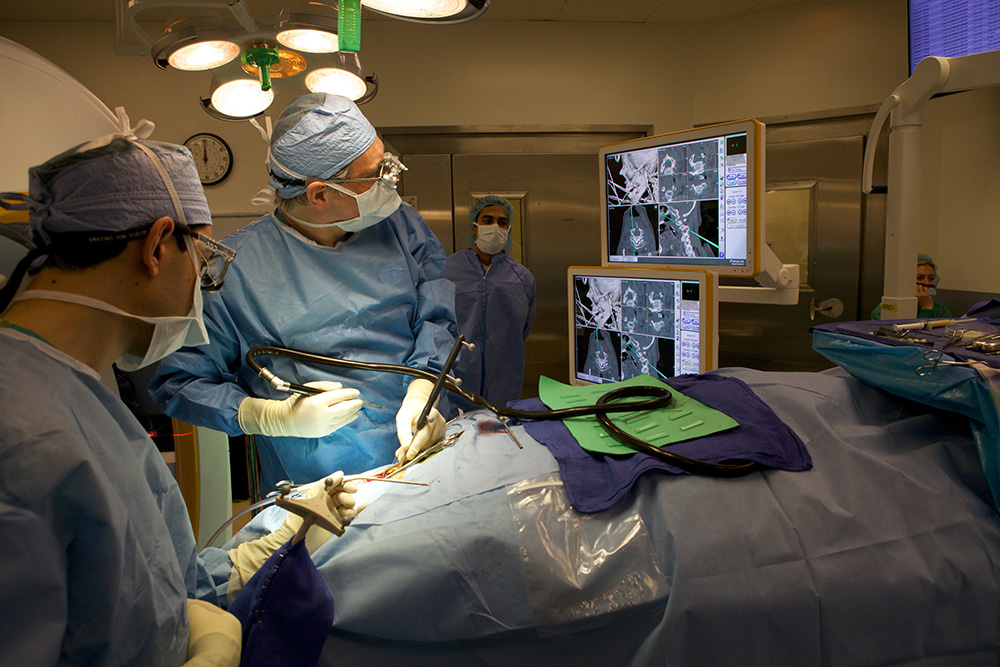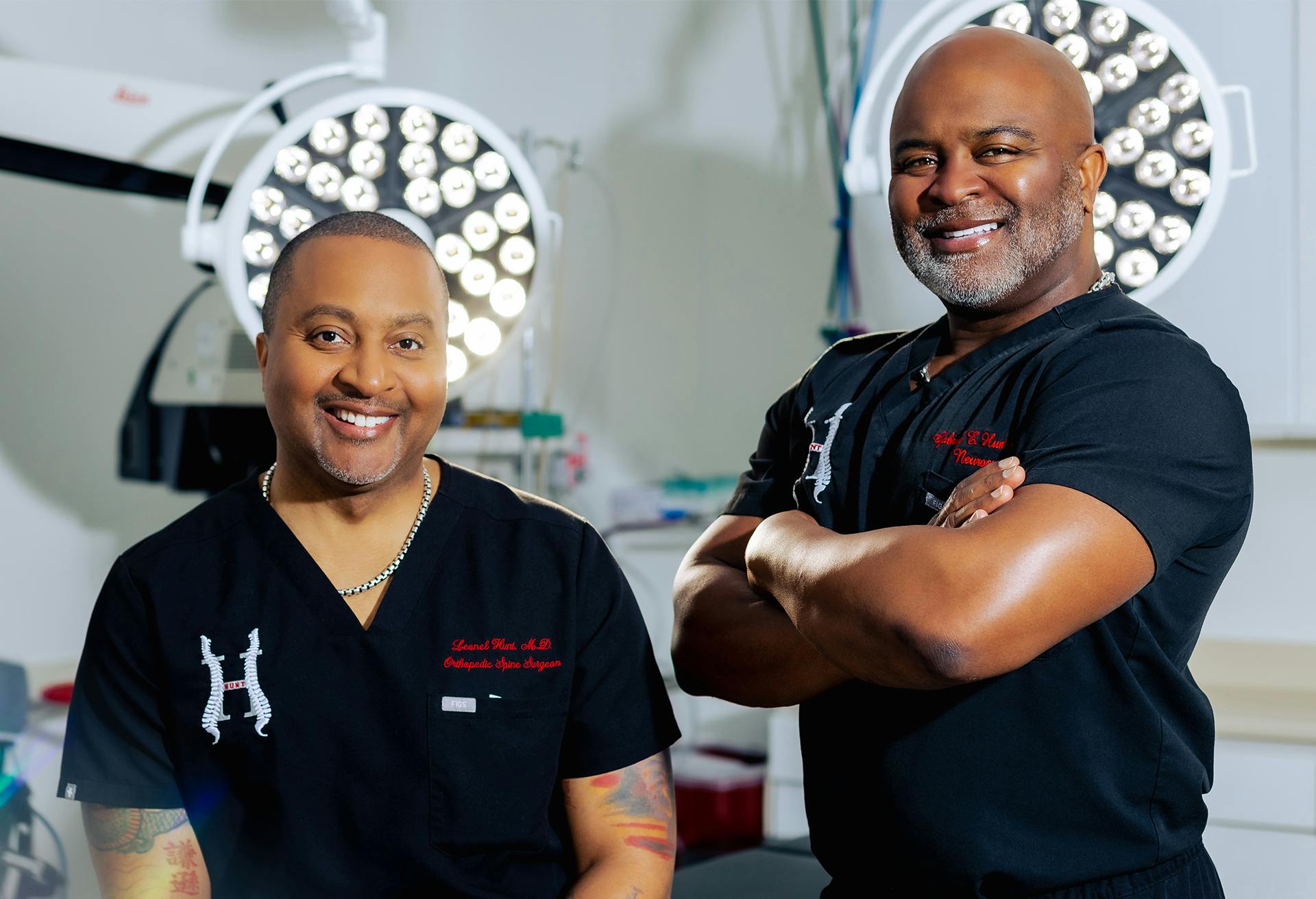Patient Success Stories with the Best Spine Surgeons in St Louis MO
Patient Success Stories with the Best Spine Surgeons in St Louis MO
Blog Article
An Introduction of Spinal Column Conditions That Frequently Cause Surgical Treatments
Back conditions such as herniated discs, back constriction, and degenerative disc disease regularly require surgical interventions when traditional treatments stop working to ease consistent symptoms. Comprehending the subtleties of each condition and the equivalent medical options, such as discectomy or back blend, is vital for effective monitoring.
Herniated Discs
Although numerous people with herniated discs might find relief via traditional therapies, surgery ends up being an essential factor to consider when signs worsen or continue - best spine surgeons in st louis mo. A herniated disc takes place when the soft internal gel of a back disc protrudes through its external layer, potentially pressing neighboring nerves and leading to discomfort, pins and needles, or weak point in the extremities
Conventional management typically consists of physical treatment, discomfort medicines, and corticosteroid shots, which intend to decrease inflammation and improve feature. Nevertheless, in instances where these techniques stop working to reduce debilitating signs, medical options might be discovered.
The most typical medical treatment for herniated discs is a discectomy, which includes the elimination of the herniated portion of the disc to eliminate pressure on the impacted nerve origin. In a lot more serious instances, back fusion might be necessary to maintain the affected vertebrae.
People are suggested to talk about the potential risks and advantages of surgical treatment with their doctor to make a notified decision. Ultimately, the goal of any kind of surgical treatment is to recover feature, minimize discomfort, and enhance total lifestyle for individuals experiencing from herniated discs.
Spine Stenosis
Back constriction takes place when the spaces within the back slim, causing boosted pressure on the spine cord and nerves. This condition can establish in numerous regions of the spine, consisting of the cervical and back areas, usually due to age-related modifications, such as degenerative disc disease, arthritis, or thickening of tendons.
Patients with back stenosis may offer with signs that include discomfort, tingling, prickling, or weak point, mainly in the arms or legs. These signs and symptoms can be aggravated by activities that include standing or strolling, typically leading individuals to look for relief via traditional therapies like physical therapy, medications, or epidural steroid injections.
Nevertheless, when these non-surgical treatments fail to give ample alleviation, surgical choices might be considered. Usual surgical procedures for back constriction include laminectomy, which includes the removal of part of the vertebra to relieve stress, and back blend, which maintains the affected area.
Spondylolisthesis
Spondylolisthesis happens when one vertebra slips onward over an additional, causing misalignment of the back. This condition can arise from different elements, including congenital defects, injury, or degenerative adjustments in the spinal column. It is most commonly observed in the lumbar area, specifically at the L4-L5 and L5-S1 levels.

Therapy choices differ based upon the severity of the slippage and the signs and symptoms provided. Conventional measures, including physical therapy, discomfort administration, and activity modification, are typically the initial line of protection. However, when non-surgical strategies fail to ease symptoms or when significant nerve compression exists, surgical treatment might be necessitated. Surgical options can include spinal blend or decompression procedures, targeted at recovering placement and minimizing neurological signs. Early diagnosis and ideal management are vital for ideal results in individuals with spondylolisthesis.
Degenerative Disc Condition

The condition can be diagnosed via a mix of medical assessment, imaging research studies, and person history. When these approaches fall short to offer sufficient alleviation, surgical interventions might be taken into consideration.
Surgical choices for DDD may consist of back fusion or artificial disc substitute, targeted at stabilizing the affected sector and easing discomfort (best spine surgeons in st louis mo). Inevitably, the choice of treatment is embellished, taking right into account the severity of the condition, patient health, and way of life factors
Back Growths

What factors add to the growth of lumps within the spine, and how do they show up in people? Spinal growths can occur from numerous elements, consisting of hereditary predisposition, ecological impacts, and pre-existing clinical conditions. They can be classified as primary growths, coming from the spinal column, or second growths, which spread from other areas of Check Out Your URL the body. Patients may provide with a series of signs and symptoms, including localized discomfort, neurological shortages, weak point, or changes in bowel and bladder feature, relying on the tumor's size and place.
Medical diagnosis normally entails imaging studies such as MRI or CT scans, which aid mark the lump's qualities and influence on bordering frameworks. In evaluating therapy alternatives, the tumor's kind, grade, and place are crucial factors to consider. Surgical treatment may be necessitated to ease signs and symptoms, acquire a biopsy, or eliminate the lump totally. The goal of surgical treatment is frequently to decompress neural elements and stabilize the spinal column. Adjuvant treatments, including radiation or radiation treatment, may also be required relying on the lump's nature. Early discovery and treatment are crucial for enhancing results in patients with spine growths.
Verdict
In recap, spine conditions such as herniated discs, back stenosis, spondylolisthesis, degenerative disc condition, and spinal tumors often require medical intervention due to their potential to cause substantial pain and functional disability. While traditional treatments may supply short-lived relief, medical alternatives come to be important when signs and symptoms linger or worsen. Prompt medical diagnosis and treatment play a vital go to my site role in restoring feature and boosting the quality of life for afflicted individuals, emphasizing the importance of thorough spinal treatment.

Report this page